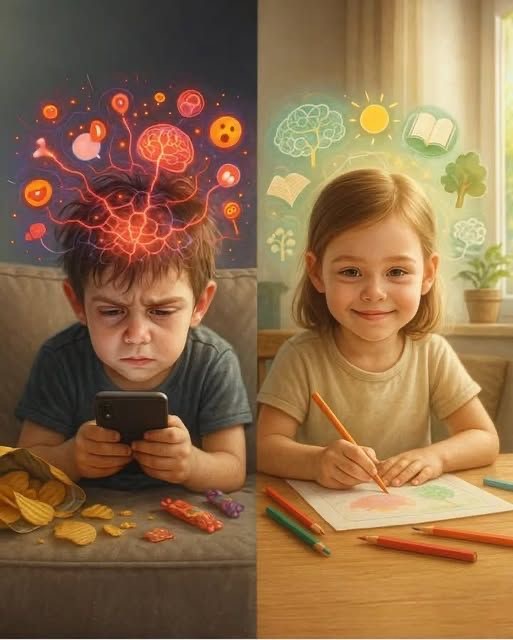The Hidden Harm of Excessive Internet and Social Media Use in Kids

In today’s digital age, children are growing up surrounded by screens. Social media, online games, and endless scrolling have become a part of daily life. While technology brings opportunities for learning and connection, excessive use of the internet and social platforms comes with hidden costs—especially for young minds that are still developing.
The harm occurs at two major levels: instant gratification and social isolation.
1. Instant Gratification Over Sustained Growth
Every time a child receives a like, a comment, or unlocks a new level in a game, their brain rewards them with a surge of dopamine—the feel-good chemical. This instant gratification feels rewarding in the moment, but it can dull their motivation to pursue activities that require patience and persistence.
Reading a book, practicing a sport, or building a skill like drawing or music doesn’t provide instant rewards. These are slow processes that demand time and effort but ultimately lead to long-term growth and resilience. When children get accustomed to quick hits of pleasure online, they may lose interest in activities that nurture discipline, creativity, and emotional strength.
2. Virtual Connection, Real-World Isolation
Social media gives the impression of being connected to hundreds of friends and communities. But this virtual connection often comes at the expense of real-world interaction. Children may spend hours chatting online or playing with friends virtually, while face-to-face conversations and genuine bonding take a backseat.
As human beings, we are wired for physical presence, eye contact, shared laughter, and emotional closeness. These are the experiences that regulate our nervous system, provide comfort, and strengthen our sense of belonging. When children miss out on such real connections, feelings of loneliness and isolation gradually creep in, harming not just their mental health but even their physical well-being.
The Bigger Picture
While the internet is not the enemy, balance is crucial. Technology can be an incredible tool for learning and connection when used wisely. But parents, teachers, and caregivers need to create boundaries that help children enjoy the benefits without falling into the traps of overuse. Encouraging outdoor play, hobbies, family conversations, and mindful technology use can go a long way in ensuring kids grow up both digitally skilled and emotionally healthy.
At the heart of it, children need more than screens—they need connection, patience, and opportunities to grow at their own pace.



Comments (0)